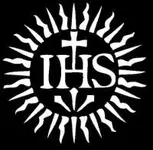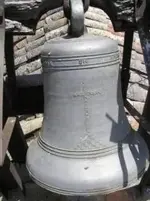Dear Scubafinder;
First, CONGRATULATIONS!!! That is a postively WONDERFUL find, my friend!!! Now down to business. Let us clear the decks just a bit and then we can begin to break it down into it's component parts:
First, IHS does not stand for "Iesus Hominum Salvator". This is a very common misconception, as is the theory that it stands for "In Hoc Signo" and several other lesser phrases. The initials IHS are a Christogram, in fact, it's one of Christianity's earliest Christograms. The initals IHS were derived from the classical Greek letters, "Iota Eta Sigma" or simply "ΙΗΣ". The letters Iota Eta Sigma are the first 3 letters of the name of Jesus, hence the term "Christogram". Translated from classical Greek into Western Latin of the Middle Ages, the correct initials are IHS.
Now, the Christogram *IHS* is not necessarily a Jesuit Christogram, as it has been in existence and in continual use since at least the early Middle Ages, however the Society of Jesus (the Jesuits) adopted this particular Christogram and as such, it is now a part of the official seal. What leads me to believe the Christogram is in fact Jesuit in origin is the final initial "S". Very few Western Europeans abbreviated the Christogram as IHS and it is far more common to see the same Christogram annotated as IHC. Very few scholars realized that the Latin letter S more closely represented the Greek letter Sigma, and it is therefore a common mistake to see IHS abbreviated as IHC. The Jesuits were practically the only Catholic Order which were so thoroughly schooled in the classical languages that they seldom committed errors such as this.
Moving onward, the sun symbol depicting the cross is definitely Jesuit in nature and origin and the Sun has always been incorporated into the official seal of the Society of Jesus, even today. In fact, the current seal is comprised of the letters IHS with a cross extending upwards from the crossbar of the H, with 3 nails below the Christogram, depicting Christ's cruxification, surrounded by the Sun as is depicted in the rendition of the seal below.
Therefore, one can practically ascertain that the bell was in fact a Jesuit artifact and it was most likely either destined for, or brought from, a Jesuit mission in Central or South America. I feel that the words MARIA ANNODE are a name and they do not describe the word YEAR or an action. The year "1639" would most likely be the year in which the mission was established, therefore this is where I would be my research.
Your friend;
LAMAR
 And things like this are why I'm still here doing it. The never ending mysteries insure that boredom never returns....
And things like this are why I'm still here doing it. The never ending mysteries insure that boredom never returns.... And things like this are why I'm still here doing it. The never ending mysteries insure that boredom never returns....
And things like this are why I'm still here doing it. The never ending mysteries insure that boredom never returns....


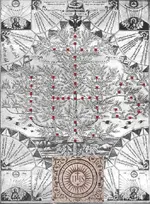
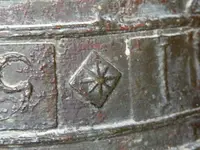

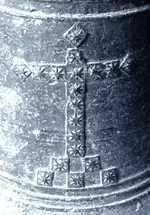


 Beautiful piece of history you have.
Beautiful piece of history you have.